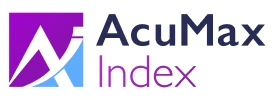How much do you really know about the work that your team does every day? According to a recent Harvard Business Review research study, most managers aren’t very in touch with the work their team does. When managers were asked about their teams’ work, on average they either did not know or could not remember about 60% of the work their teams do. In one very extreme instance, a manager in the study could describe only 4% of their team’s work.
Not understanding what your team does can have steep consequences. When you’re trying to figure out strategy, make decisions, and set goals it is important to know what is going on within the team and where opportunities exist. If you get a better understanding of the work being done within the team you might find that there is an opportunity to consolidate certain kinds of work to one individual and that it would free up other members of the team. It could also help point out process issues or other barriers your team is facing.
In the Harvard Business Review study, they found that the problem is fixable using Machine Learning (ML) algorithms to learn from how teams do their work. The ML worked by having managers teach a software system the processes they thought were taking up most of their teams’ time and then using the manager-taught processes, the machine learning algorithms attempted to find similar patterns of work being done by the members of the team. The tool then measured the fraction of each team’s day in which the team members demonstrated similar patterns of the taught processes. Using the ML algorithms, it reduced the percentage of the average managers who did not know or couldn’t remember their teams’ work from ~60% to 24%. This is a large improvement, but ML isn’t an accessible tool for many companies.
However, that doesn’t mean that businesses cannot leverage a data-driven approach to improving awareness of their teams’ output. Companies can create their own versions of this technique by having employees self-identify the categories of work they are spending time on and then aggregating the data to make informed decisions. When employing these techniques it is important to be mindful of privacy concerns and not creating trust issues within the team. Using anonymous methods and aggregate methods of data collection while being transparent with your team about the purpose of the exercise will help them be a part of accomplishing the overall goal of efficiency and accurate goal setting.
When you’re deciding how to better organize the work the team is doing you can look at who is excelling at particular items and who is struggling and organize work accordingly. Everyone’s brains work differently, and it may just naturally take someone twice the amount of time to accomplish a particular task as another member of the team. You can use knowledge of how your employees are wired and how they are spending their time to better align tasks to your team member’s natural strengths.
By improving managers’ understanding of the specifics of their teams’ work, they will be able to set more realistic targets and improve productivity.
How Much Do You Really Know About the Team You’re Leading?





